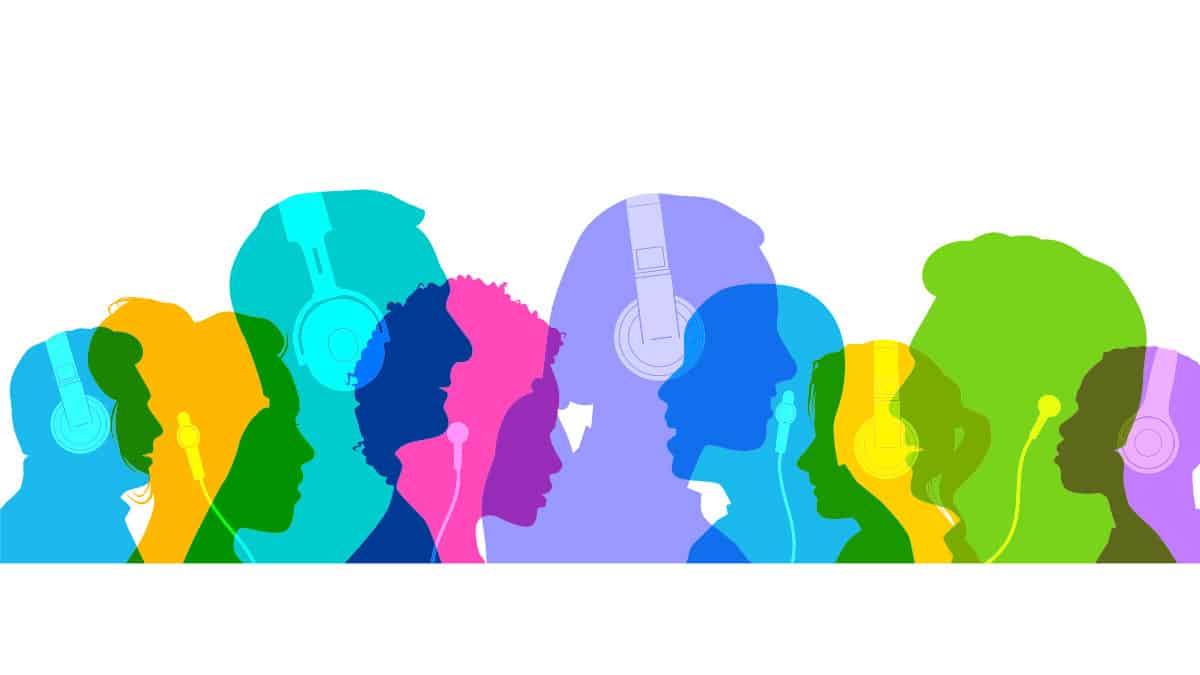It’s fair to say that emerging technologies will change the face of radio in the future. Some will provide tweaks here and there; others fundamentally change radio. During RedTech #RadioWeek, we lined up some tech leaders and asked them what emerging technologies will have a strategic impact on radio. Some of their suggestions caught us a little off guard.
This discussion focused on how developing technologies can help radio stations compete more effectively by running more efficiently and at a lower cost without sacrificing quality. The discussion went in familiar but also slightly unexpected directions.
On the panel were three industry heavyweights at the forefront of radio innovation: Udit Tyagi, the chief digital officer for Indian media giant Mirchi; Paul Cramer, the managing director of enterprise solutions at Veritone; and Antonio Arcidiacono, the CTO and CIO at the European Broadcasting Union.
RedTech’s Omar Essack was the moderator and asked for a snapshot of linear radio in their ambit. He pointed to India’s growing young audience, where smartphones are ubiquitous and asked Tyagi if linear radio’s days were numbered. “The growth on FM will slow, but on digital, it will be immense,” Tyagi answered, adding that a significant amount of audio consumption is in cars, which are becoming increasingly digital.
Cramer was upbeat, but cautious about linear radio in the United States, pointing out that it still reaches 87% of the population, “It is the number one reach medium.” In Europe, according to Arcidiacono, the vast majority of EBU members still broadcast on FM. “Most listening is done either at home or in the car,” he said, “but the technological developments driving hybrid radio are shaping the industry in many ways.”
Think digital
So, what technological solutions are foremost in their minds to meet the strategic challenges of radio? One word came up probably more than any other: digital. Tyagi pointed especially to digital solutions that were formally considered the reserve of video, “Whatever has been driving VoIP is now driving radio.” He went on to say that the radio and audio industries “must think digital.” He added, “The distribution mediums may keep changing, but the core parent medium will remain digital.”
Cramer agreed, saying he also keeps an eye on the video space. He explained how someone mentioned at a video tech conference that “consumers will use the best available screen to view content.” Away from home that could be a smartphone, but a 55-inch screen TV at home. “The same principle applies to audio,” he said. Consumers listen to a radio in the car, a smart speaker at home, a smartphone on the move. He explained its impact: “Digital extension is important for our clients — being able to make their content available in a time-shifted format, across all platforms and all devices.”
Arcidiacono chipped in, emphasizing that “digital-first” especially needs to be the mindset for any station targeting a younger audience. It also means radio stations must consider creating cross-platform content in terms of discoverability and content consumption. “They need to deliver across different content infrastructures continually,” he said.
This was something everyone agreed on. “We deal with clients all over the world but are finding that their needs are largely the same,” said Cramer. “Distribution is no longer a competitive advantage for radio. There are now no barriers to entry for new entrants into radio’s space — the production and distribution of content across multiple platforms. Content is king.” Therefore, radio broadcasters delivering original, speech-based content are at a distinct advantage over those relying on recorded music programming.
The other technologies
At this point, the discussion took one of the more surprising routes of emerging technology: indexing. For content to be discoverable and consumed across multiple platforms, radio stations should be indexing it. If a station is sitting on a mine of valuable content, it doesn’t help if no one can find it. But stations must also apply indexing technology to live broadcasts. “So much of what radio does is vaporized after broadcast,” said Cramer. “Once stations transcribe content, it is available for future uses — recycling and programmatic monetization.”
This led to another unexpected — and largely ignored — emerging technology with value for radio stations with original content: AI-driven translation programming. In the U.S., where Spanish is the second most-used language, some radio stations use synthetic voice translation technology to turn English programs into Spanish. “No human touches it,” added Cramer,” so cost is minimal.” Arcidiacono admitted that public broadcasters within the EBU are capitalizing on the fact they have multiple languages on their doorstep by experimenting with translation technology to reach a wider audience.
Radio is passive
Tyagi highlighted that radio is mainly passive — consumers can enjoy it while doing other things. This is what the innovators that radio needs find so attractive.
“There’s been so much innovation in video that radio — and the idea of passive consumption — has been left in the corner.”
He added that the video space is becoming crowded for innovators. “Audio is now attractive, and digital attention is moving in that direction.” Every medium has a phase, said Tyagi, sagely, adding, “the phase for audio has come.”
So how, asked Essack, are radio stations going to fund and monetize all these technological innovations.
Arcidiacono’s answer came left-of-field: “NFTs — non-fungible tokens. We will use virtual funding systems and collect revenue through micropayments.” The others nodded. “It’s an absolute must,” said Tyagi. Cramer agreed, saying that stations must extend technological innovation to monetization. He invoked the old radio joke, “When you buy radio, you get an invoice; when you buy digital, you get data.”
Watch the video here.

